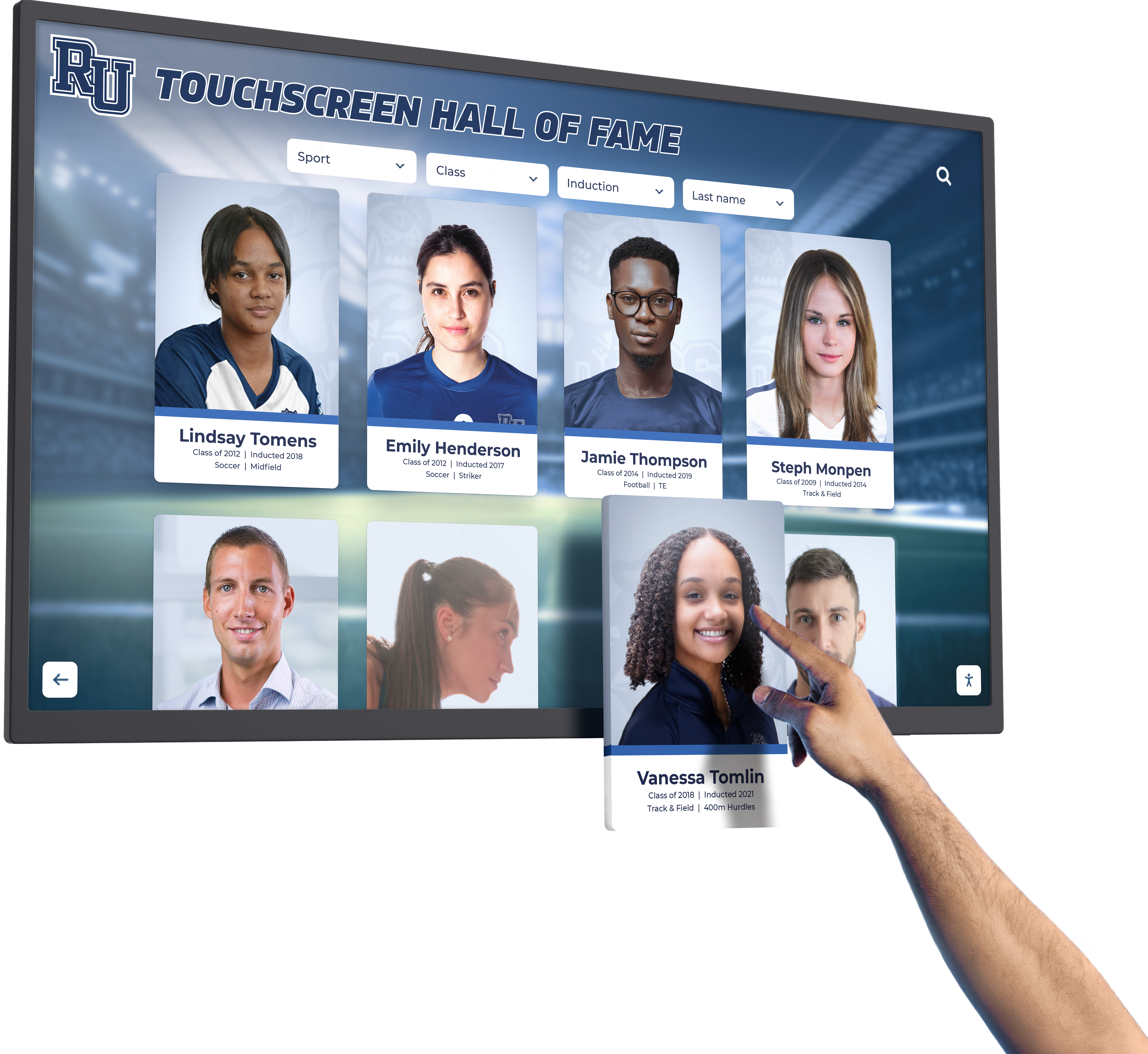Schools across the country face a critical decision: which touchscreen technology will best serve their educational mission? Interactive flat panel displays have transformed modern education, moving far beyond traditional whiteboards to create dynamic, engaging learning environments. Yet selecting the right touchscreen system requires understanding not just classroom instructional needs, but also how these powerful displays can extend beyond academics to showcase student achievement, preserve institutional history, and build lasting school pride.
The best touchscreen solutions for schools serve dual purposes. In classrooms, they facilitate collaborative learning, support diverse learning styles, and enable teachers to create immersive educational experiences. Outside the classroom—in hallways, commons areas, and athletic facilities—these same interactive technologies become powerful tools for recognizing student accomplishments, celebrating school history, and engaging the entire school community through touchscreen-enabled halls of fame and digital recognition displays.
Why Schools Need Modern Touchscreen Technology
Today's students have grown up with smartphones, tablets, and touchscreen interfaces as their primary way of interacting with information. Schools that incorporate familiar touch-based technology create more engaging, accessible learning environments while preparing students for technology-rich futures. Beyond classroom instruction, interactive touchscreens enable schools to celebrate achievement comprehensively—honoring athletic excellence, academic accomplishments, and distinguished alumni through engaging digital displays that static plaques and trophy cases simply cannot match. Solutions like Rocket Alumni Solutions specialize in transforming hallway touchscreens into powerful recognition systems that preserve school history while inspiring current students.
Inside the Classroom: Interactive Touchscreens for Teaching and Learning
Modern classroom touchscreens represent far more than digital whiteboards. These sophisticated interactive flat panel displays combine high-resolution screens, multi-touch capability, integrated computing, and specialized educational software to create learning environments where students actively participate rather than passively observe.
Understanding Interactive Flat Panel Display Technology
Interactive flat panel displays (IFPDs) bring together several technologies creating comprehensive classroom solutions that traditional equipment cannot match.
Display Quality and Resolution: The best classroom touchscreens feature 4K Ultra HD resolution (3840 x 2160 pixels) delivering crystal-clear text, vibrant images, and professional presentation quality. This resolution ensures students in all seating positions can clearly see detailed diagrams, complex equations, and fine text without eyestrain. Screen sizes typically range from 55 inches for smaller classrooms to 86 inches or larger for lecture halls, auditoriums, and multipurpose spaces.
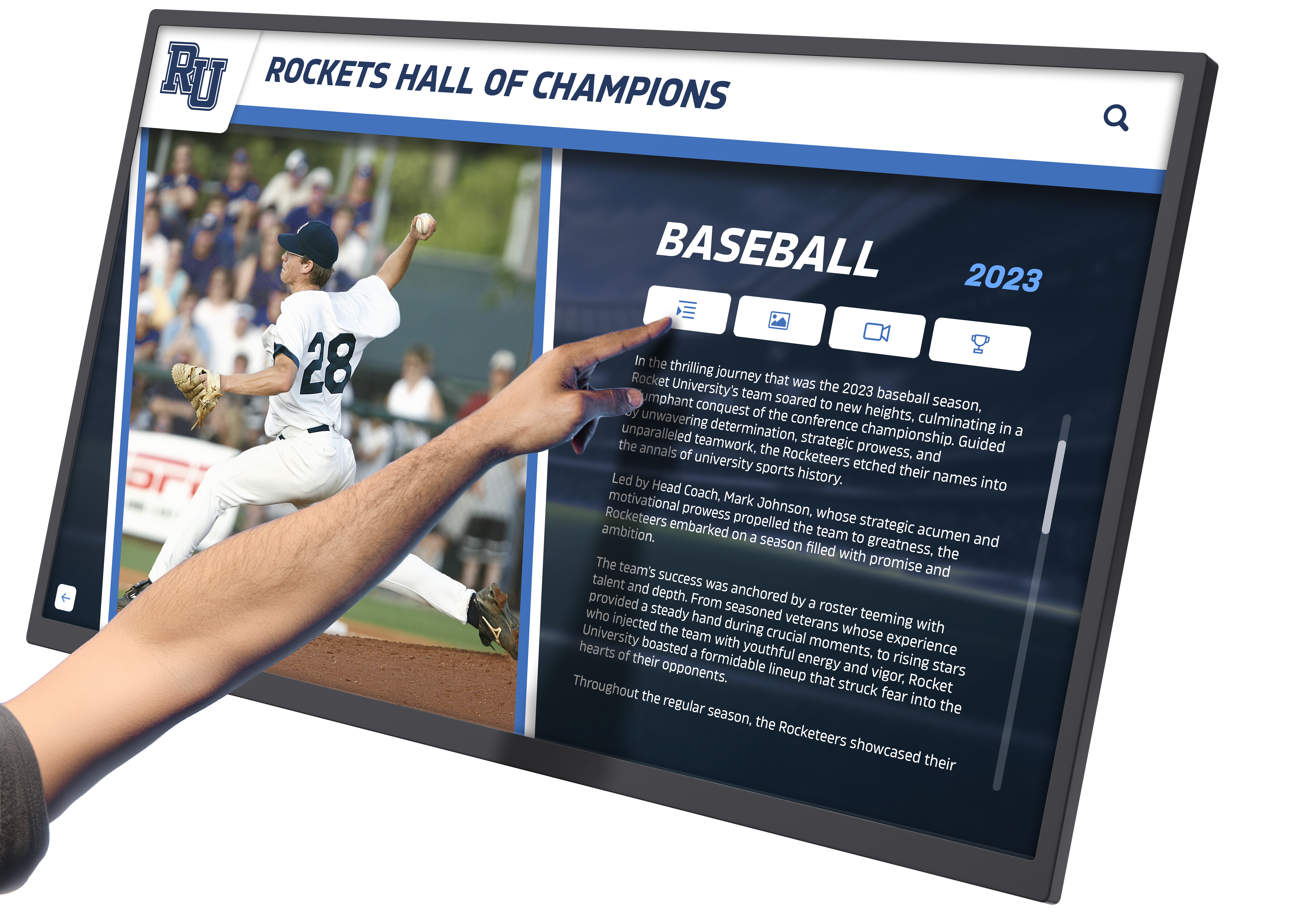
Multi-Touch Capability: Modern educational touchscreens support simultaneous multi-touch interaction—typically 20 or more touch points—enabling multiple students to work on the display simultaneously. This collaborative capability transforms group activities where several students can annotate, manipulate objects, or solve problems together directly on the screen. Touch responsiveness matches smartphone and tablet performance students already know intuitively.
Integrated Computing: Many classroom touchscreens include built-in computing modules running Android or Windows operating systems. This integration eliminates requirements for separate computer connections, simplifies installation, reduces cable management complexity, and provides sufficient processing power for running educational applications, web browsers, and multimedia content without additional equipment.
Commercial-Grade Construction: Unlike consumer TVs, educational touchscreens feature tempered anti-glare glass resistant to scratches and impacts, sealed components preventing dust infiltration, commercial-grade backlighting rated for continuous 16+ hour daily operation, and robust mounting systems supporting permanent installations. This durability ensures displays withstand years of intensive student interaction in demanding classroom environments.
Key Benefits of Classroom Interactive Displays
Research consistently demonstrates that interactive touchscreens deliver measurable educational benefits beyond what traditional teaching tools provide.
Increased Student Engagement and Participation: Interactive displays capture attention more effectively than traditional whiteboards, holding student interest throughout lessons. Students demonstrate greater willingness to participate when they can physically interact with lesson content on large touchscreens. This active participation—touching, manipulating, and exploring content directly—creates deeper cognitive engagement than passive observation of teacher-directed presentations.

Teachers report that even typically reluctant students volunteer to demonstrate problems or share ideas when they can interact with touchscreens rather than writing on traditional boards. The technology reduces participation anxiety while making contribution feel more like play than performance.
Enhanced Collaboration and Group Learning: Multi-touch capability enables genuine collaborative problem-solving where multiple students work simultaneously on the same display. Rather than taking turns at a traditional whiteboard, students can collaborate in real-time—moving objects, annotating diagrams, or building concept maps together. This simultaneous interaction mirrors how students naturally work together, creating more authentic collaborative experiences.
Group activities become more dynamic when students can save their collaborative work, compare different groups’ approaches side-by-side on split screens, and build on each other’s contributions iteratively. The technology facilitates cooperation rather than merely enabling it.
Support for Diverse Learning Styles: Interactive touchscreens naturally accommodate different learning preferences within single lessons:
- Kinesthetic learners benefit from physical interaction—touching, dragging, rotating, and manipulating on-screen content engages these students who learn best through movement and hands-on activity
- Visual learners engage with high-resolution graphics, color-coded information, animated demonstrations, and multimedia presentations that clarify concepts through imagery
- Auditory learners benefit from embedded video, audio narration, and recorded explanations students can replay as needed
- Reading/writing learners appreciate text-based materials, note-taking capabilities, and the ability to review saved lesson content later
This multi-modal approach ensures every student finds pathways to understanding regardless of their natural learning preferences.
Immediate Feedback and Assessment: Interactive touchscreens enable instant feedback that accelerates learning. Students can check answers immediately, receive automated hints when struggling, and see correct approaches demonstrated instantly. Teachers can conduct quick formative assessments using interactive polling, quizzes, or problem-solving exercises where every student responds simultaneously through personal devices connected to the main display.
This immediacy helps students self-correct misconceptions before they solidify, maintains momentum by eliminating waiting periods, and provides teachers real-time data about comprehension levels enabling responsive instruction adjustments.
Improved Classroom Management: Engaging content displayed on large interactive screens naturally focuses attention, reducing off-task behavior and disruptions. Teachers can use built-in timers to pace activities, display noise level monitors encouraging appropriate volume, and employ attention-getting animations or transitions that refocus students between activities.
The technology itself creates structure—students understand that when the interactive display is active, learning is happening. This clear environmental signal helps establish classroom routines and behavioral expectations.
Accessibility for Students with Special Needs: Interactive touchscreens include features particularly beneficial for students with disabilities:
- Text-to-speech functionality reads on-screen content aloud for students with visual impairments or reading difficulties
- Adjustable text size and high-contrast modes improve readability for students with low vision
- Stylus input provides alternatives for students who struggle with traditional writing implements
- Touch interaction may be easier than keyboard and mouse for students with certain motor challenges
- Built-in accommodations like closed captioning support students with hearing impairments
These accessibility features integrate seamlessly into standard lessons, reducing stigma while ensuring all students can participate fully.
Leading Interactive Touchscreen Brands for Classrooms
Multiple manufacturers produce high-quality educational touchscreens, each with distinctive features and advantages.
SMART Boards: SMART Technologies pioneered interactive whiteboards and remains among the most trusted brands in education. SMART Boards feature the proprietary SMART Learning Suite software providing comprehensive lesson creation and delivery tools. Their displays support multi-touch and pen input simultaneously, enable cloud collaboration so students can contribute from personal devices, and include SMART Ink allowing annotation over any application or website. The embedded iQ operating system provides fast access to apps and tools without separate computing equipment.
Promethean: Promethean panels emphasize collaborative learning with features supporting simultaneous multi-user interaction. Their ActivPanel displays include ActivInspire software and Classflow platforms providing extensive educational resources, lesson templates, and assessment tools. Unique features include dual-handed gesture support, layered annotation capabilities maintaining separate writing surfaces, and embedded Android operating systems with access to Google Play educational apps.
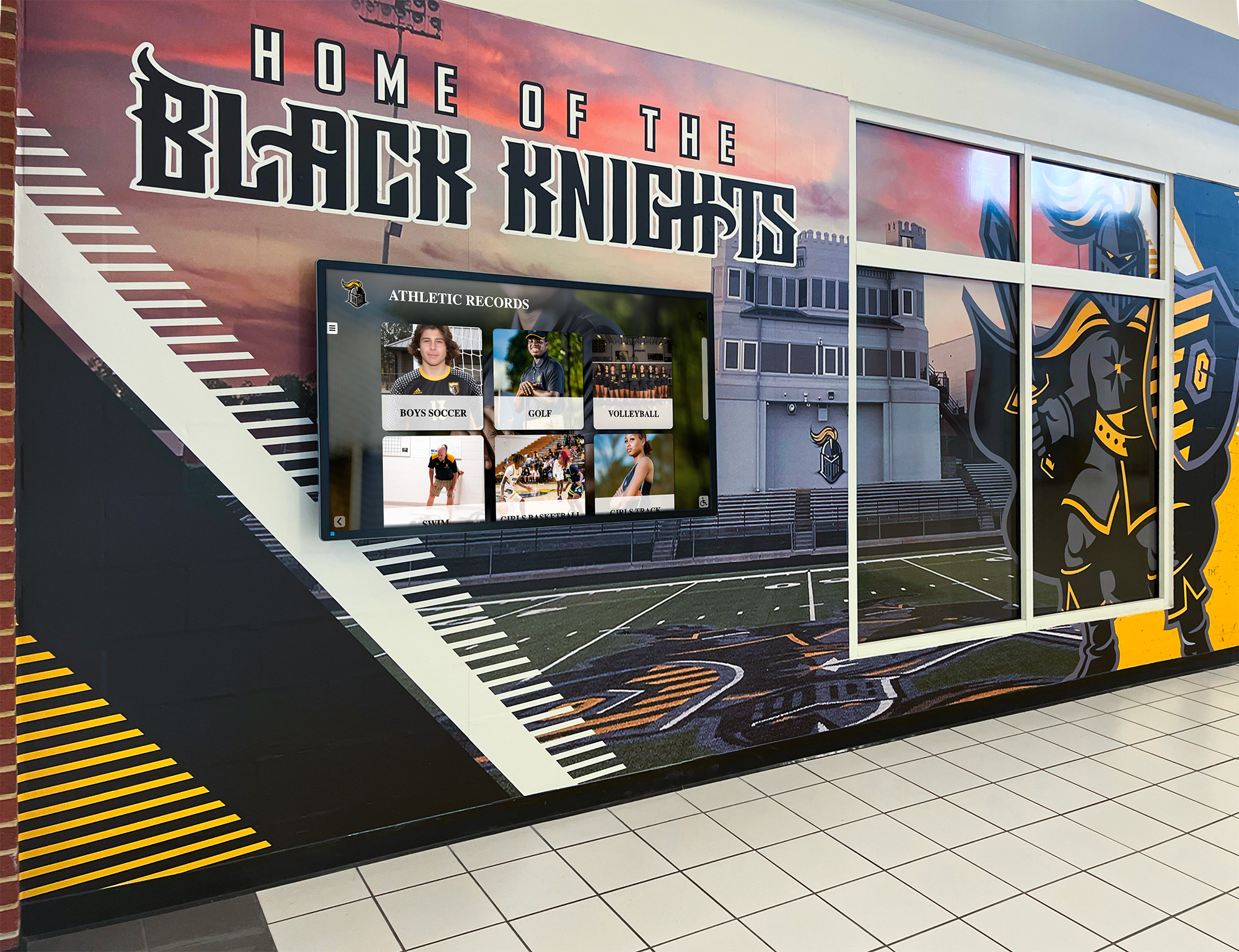
Newline Interactive: Newline displays feature optically bonded screens reducing parallax and improving viewing angles from anywhere in classrooms. Their panels include wireless content sharing enabling teachers and students to display from personal devices without cables, built-in speakers eliminating external audio equipment, and two-way screen control allowing interaction from connected devices. Newline’s customizable home screen interface simplifies access to frequently used applications and resources.
ClearTouch: ClearTouch panels combine interactive display hardware with extensive professional development and technical support services. Their displays feature clean industrial design, intuitive user interfaces requiring minimal training, and compatibility with major educational software ecosystems. Schools interested in learning more about using ClearTouch for recognition applications can explore how these displays extend beyond classroom instruction. ClearTouch offers various warranty and support packages ensuring schools receive assistance when needed, reducing technology frustration for educators.
ViewSonic: Known for high-quality displays, ViewSonic’s ViewBoard interactive panels deliver excellent color accuracy and brightness alongside interactive capabilities. Their displays emphasize easy wireless connectivity, integrated whiteboarding applications, and compatibility with popular classroom management platforms. ViewSonic offers extensive screen size options from compact 55-inch displays to massive 98-inch panels for large spaces. Schools considering ViewSonic displays for recognition can explore ViewSonic hall of fame implementations to understand how these panels perform in non-classroom applications.
BenQ: BenQ interactive displays focus on teacher efficiency with features like dual-operating system support (Android and Windows), NFC card login enabling fast personalized access, side-by-side app display for multitasking, and cloud storage integration simplifying lesson material management. Their germ-resistant screens and air quality sensors address health considerations particularly relevant in educational environments.
TouchView: TouchView panels feature 20-point multi-touch supporting extensive group collaboration, anti-glare protective glass maintaining visibility in bright classrooms, and magnetic annotation pens that store conveniently on the display frame. Their Android integration provides access to educational app ecosystems while optional Windows modules accommodate institutions preferring Microsoft environments.
Avocor: While often positioned for corporate environments, Avocor displays excel in higher education and collaborative learning spaces. Their panels feature excellent integration with Microsoft, Google, and Zoom platforms, built-in cameras supporting video conferencing and hybrid learning, and precise inking for detailed annotation. Avocor emphasizes high-end construction and performance for demanding institutional applications.
Essential Features When Selecting Classroom Touchscreens
Schools evaluating interactive display options should prioritize features that directly impact teaching effectiveness and long-term value.
Software Ecosystem and Compatibility: The best hardware delivers limited value without comprehensive software enabling effective lesson creation and delivery. Evaluate included educational software for intuitive lesson creation tools, extensive ready-made content libraries, compatibility with existing curriculum materials, assessment and engagement features, and cloud storage enabling lesson access from anywhere. Ensure displays work seamlessly with existing school technology including Google Classroom, Microsoft 365, learning management systems, and student information systems.
Ease of Use and Training Requirements: Technology adoption depends on teacher comfort and confidence. Select displays with intuitive interfaces requiring minimal training, consistent touch response matching smartphone interactions, fast startup times eliminating waiting, reliable performance reducing technical frustrations, and comprehensive support resources including tutorials and technical assistance. The simpler systems are to use, the more consistently teachers will leverage their full capabilities.
Total Cost of Ownership: Initial purchase price represents only part of long-term costs. Consider installation expenses including mounting, connectivity, and integration, required maintenance and anticipated repair costs, software licensing fees if applicable, training investments ensuring effective adoption, and expected lifespan before replacement becomes necessary. Systems with higher initial costs but lower ongoing expenses and longer operational life often deliver better value than budget options requiring frequent replacement or extensive technical support.
Warranty and Support Quality: Educational institutions require reliable support ensuring classroom technology works consistently. Evaluate manufacturer warranty terms and duration, response time commitments for technical issues, availability of advance replacement units minimizing downtime, quality of technical support based on other schools’ experiences, and local service provider availability for installations and repairs. Poor support turns technology investments into frustrations regardless of hardware quality.
Beyond the Classroom: Interactive Touchscreens for School Recognition and Engagement
While interactive flat panels excel in instructional settings, their potential extends far beyond classroom walls. Schools increasingly recognize that these same touchscreen technologies can transform how institutions celebrate achievement, preserve history, and build community pride throughout their facilities.
The Recognition Challenge Schools Face
Traditional recognition approaches create impossible constraints for schools with decades of achievement to honor. Physical trophy cases fill completely within years. Wall space for plaques eventually exhausts. Championship banners crowd gymnasiums until no more can fit. Institutions face heartbreaking decisions: which accomplishments deserve visible recognition, and which must be relegated to storage where they provide zero inspirational value?
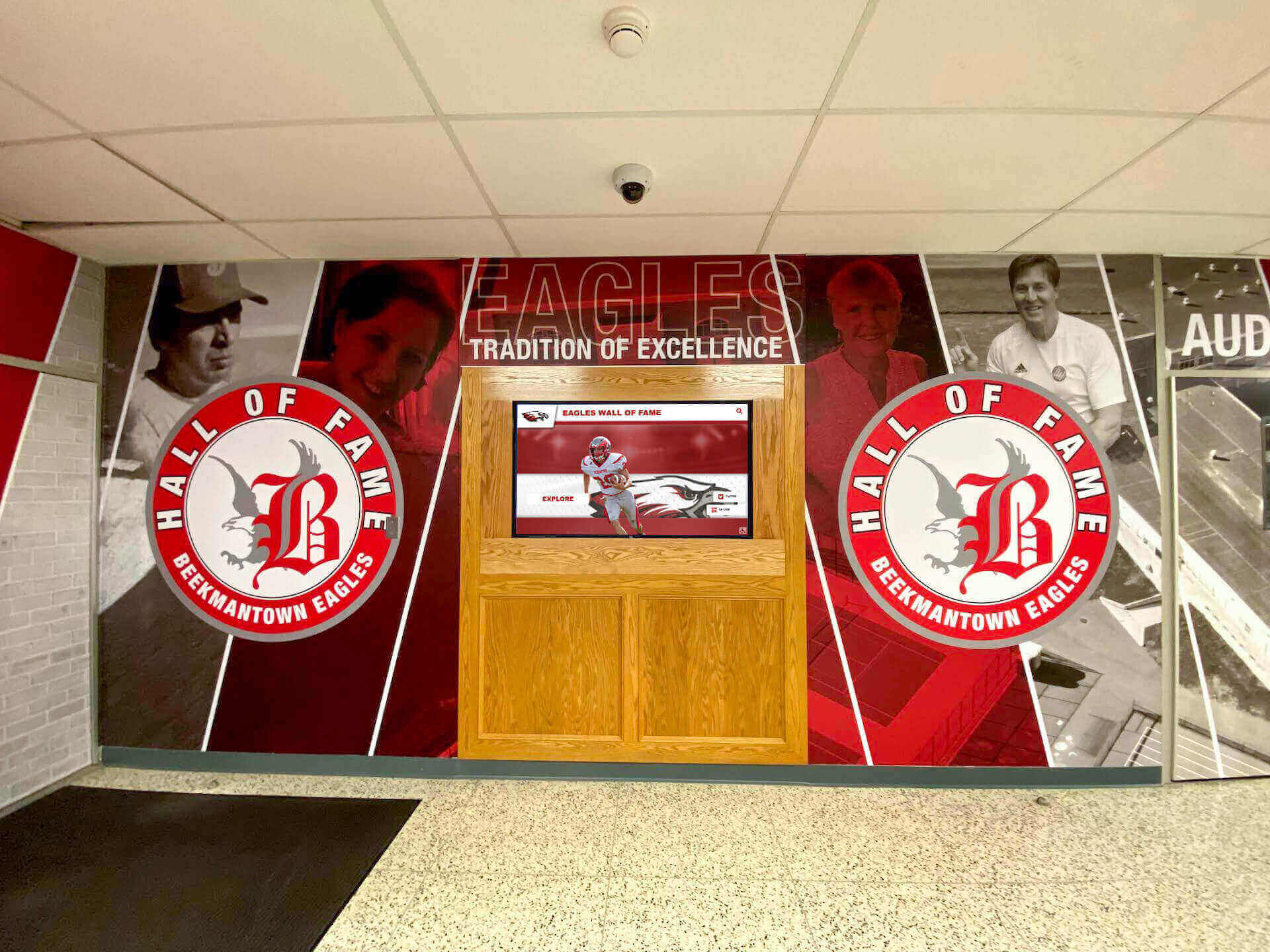
This capacity crisis forces schools to choose between honoring recent achievements while removing historical recognition, or maintaining older displays while limiting acknowledgment of current student excellence. Neither option appropriately values all the extraordinary accomplishments schools should celebrate. More significantly, static recognition displays lack engagement—students glance briefly at unchanging plaques and trophy cases, failing to discover the rich stories behind achievements or explore connections to their own interests and aspirations. Understanding how to modernize recognition walls helps schools transition from these limitations to comprehensive digital solutions.
How Interactive Touchscreens Solve Recognition Limitations
Interactive touchscreen displays placed in hallways, commons areas, athletic facilities, and entrance spaces eliminate capacity constraints while creating engaging recognition experiences impossible with traditional approaches.
Unlimited Recognition Capacity: A single interactive touchscreen can showcase comprehensive profiles for thousands of athletes, scholars, teams, and distinguished alumni—content requiring hundreds of physical plaques and dozens of trophy cases to display traditionally. Every achievement receives appropriate recognition regardless of when it occurred or how many others have been honored since. This unlimited capacity transforms recognition from selective highlighting to complete documentation of institutional excellence.
Schools can honor championship teams from every era, recognize record holders in all sports, celebrate academic achievements comprehensively, acknowledge distinguished alumni across decades, and document coaching milestones and program evolution—all within single displays accessible through intuitive touch navigation. Institutions looking to create comprehensive digital halls of fame discover unlimited capacity enables recognition programs that were previously impossible with physical space constraints.
Engaging Interactive Discovery: Static plaques receive brief glances from passersby. Interactive touchscreens invite exploration, encouraging students, alumni, and visitors to search for personal connections, discover inspiring stories, and engage deeply with achievement narratives.
Students search their own names finding recognition they didn’t know existed, explore older siblings’ or relatives’ accomplishments discovering family traditions, browse athletic teams they participate in seeking role models, discover alumni from their hometowns or career interests, and explore historical achievements understanding program legacies. This personalized discovery creates recognition relevance impossible with alphabetical lists or chronological displays.
Research consistently shows visitors spend average interaction times of 5-8 minutes with well-designed recognition displays compared to 30-60 seconds with traditional static recognition. This extended engagement creates opportunities for deeper inspiration, stronger emotional connections, and more meaningful recognition impact.
Instant Content Updates: Traditional recognition additions require weeks or months—designing plaques, processing orders, scheduling installation, coordinating physical access. Achievements often wait extended periods before receiving acknowledgment as these administrative tasks compete for limited staff attention.
Interactive recognition displays enable instant updates. After Friday night championships, authorized staff upload photos, enter achievement details, add statistics or media, and publish updates appearing immediately on connected displays. New recognition appears while achievement excitement remains high, reinforcing accomplishment significance and ensuring timely acknowledgment that traditional approaches struggle to match.
This update ease encourages comprehensive recognition. When additions require minimal effort, schools recognize not just championships but also individual achievements, academic excellence, artistic accomplishments, community service, and coaching milestones—worthy achievements often going unrecognized when updates demand significant administrative burden.
Rich Multimedia Storytelling: Physical plaques display names, dates, and brief statistics—minimal information failing to capture achievement significance or personal stories behind excellence. Interactive displays support comprehensive multimedia content including high-resolution photography showing athletes in action, detailed achievement narratives explaining significance and context, career statistics and progression over time, video highlights of championship moments or record-breaking performances, alumni reflections sharing memories and advice, and historical documentation placing achievements within program evolution.
This rich content transforms recognition from simple data display into engaging storytelling that captivates audiences, honors achievers appropriately, and inspires current students more effectively than static displays ever could. Schools can explore best practices for storytelling through digital recognition to create compelling narratives that truly honor achievements.
Rocket Alumni Solutions: Purpose-Built Interactive Recognition Software
While classroom interactive panels work well for instruction, creating effective recognition displays requires specialized software designed specifically for showcasing achievements, managing extensive historical content, and engaging diverse audiences beyond educational contexts.
Rocket Alumni Solutions provides comprehensive software platforms specifically designed to work with touchscreen hardware, transforming generic interactive displays into powerful recognition systems. Unlike classroom software optimized for lesson delivery, Rocket’s platform focuses on celebration, preservation, and engagement—core recognition purposes requiring different capabilities.
Intuitive Content Management: School staff managing recognition content typically lack technical expertise. Rocket’s web-based administrative dashboard requires no programming knowledge, features drag-and-drop media uploading, provides form-based profile creation with templates, includes preview capabilities before publishing, and offers role-based permissions controlling editing access. Athletics directors, alumni coordinators, and administrative staff can manage content confidently without IT department involvement for routine updates.

Comprehensive Profile Capabilities: Recognition value depends entirely on content richness and completeness. Rocket supports high-resolution photography with multiple images per achievement, detailed text narratives celebrating accomplishments appropriately, complete statistics and achievement data organized clearly, video integration for highlights and interviews, historical documentation preserving context, and social sharing features extending recognition reach beyond physical displays.
Templates ensure consistent presentation quality while accommodating various recognition types—athletes, teams, alumni, donors, staff, and special achievements all receive professional presentation following school branding guidelines.
Powerful Search and Discovery Features: Users visiting recognition displays should find relevant content efficiently. Rocket provides name search with auto-complete suggestions, year or class-based browsing, achievement type filtering by category, sport-specific organization, keyword search across all content, and related content recommendations encouraging progressive exploration.
This sophisticated search enables students to discover connections and role models aligned with their interests—finding alumni who pursued similar careers, athletes who played the same positions, or individuals from their hometowns creates personal relevance that generic browsing cannot achieve.
Professional Presentation Templates: Consistent, attractive presentation requires professional design expertise most schools lack. Rocket provides customizable templates matching school branding automatically, responsive layouts adapting to content volume and display orientations, accessibility compliance ensuring readability for diverse audiences, media galleries showcasing images effectively, and navigation conventions users understand intuitively from consumer technology experiences.
These professional templates ensure recognition quality reflects institutional standards regardless of which staff members create content or when updates occur.
Cloud-Based Architecture: Modern recognition systems benefit from cloud hosting enabling instant content updates without visiting displays physically, remote management from any internet-connected device, automatic software updates maintaining security and adding features, reliable uptime through redundant infrastructure, and scalability supporting growth from single to multiple displays across campuses. Cloud architecture future-proofs recognition investments as technology evolves.
Web and Mobile Accessibility: Recognition impact extends beyond those physically visiting campus locations. Rocket’s web accessibility ensures alumni anywhere can explore recognition maintaining connections regardless of geographic distance. Mobile responsiveness provides optimal experiences on smartphones and tablets—devices alumni use most frequently. Social sharing features enable recognized individuals to celebrate achievements with personal networks, extending institutional visibility organically.
Strategic Placement for Maximum Recognition Impact
Display location dramatically affects visibility, engagement, and recognition value. Schools should consider multiple high-impact locations throughout facilities.
Main Building Entrances: Entry locations capture all visitors including prospective families evaluating school quality, daily student traffic entering and exiting buildings, event attendees for athletics and performances, and community members accessing facilities. Entry placement establishes recognition prominence, signals institutional pride in achievement, and exposes diverse audiences to excellence documentation.
Athletic Facilities: Gymnasiums, field houses, training rooms, and locker room areas serve as natural locations for athletic recognition. Current athletes see recognition during daily practice creating aspirational goals, families view displays during competitions understanding program excellence, recruits explore achievements during facility tours evaluating program quality, and alumni visiting for events reconnect with their own accomplishments and teammates. Learn more about showcasing athletic achievements effectively in athletic facilities to maximize motivational impact.
Commons Areas and Hallways: Locations where students gather—cafeterias, student centers, main hallways—provide extended viewing time as students spend significant periods in these spaces daily. Casual exploration during lunch, between classes, or while waiting creates repeated exposure building familiarity with recognition content and encouraging progressive discovery across time. These locations integrate recognition into normal daily experience rather than making it special-occasion viewing.
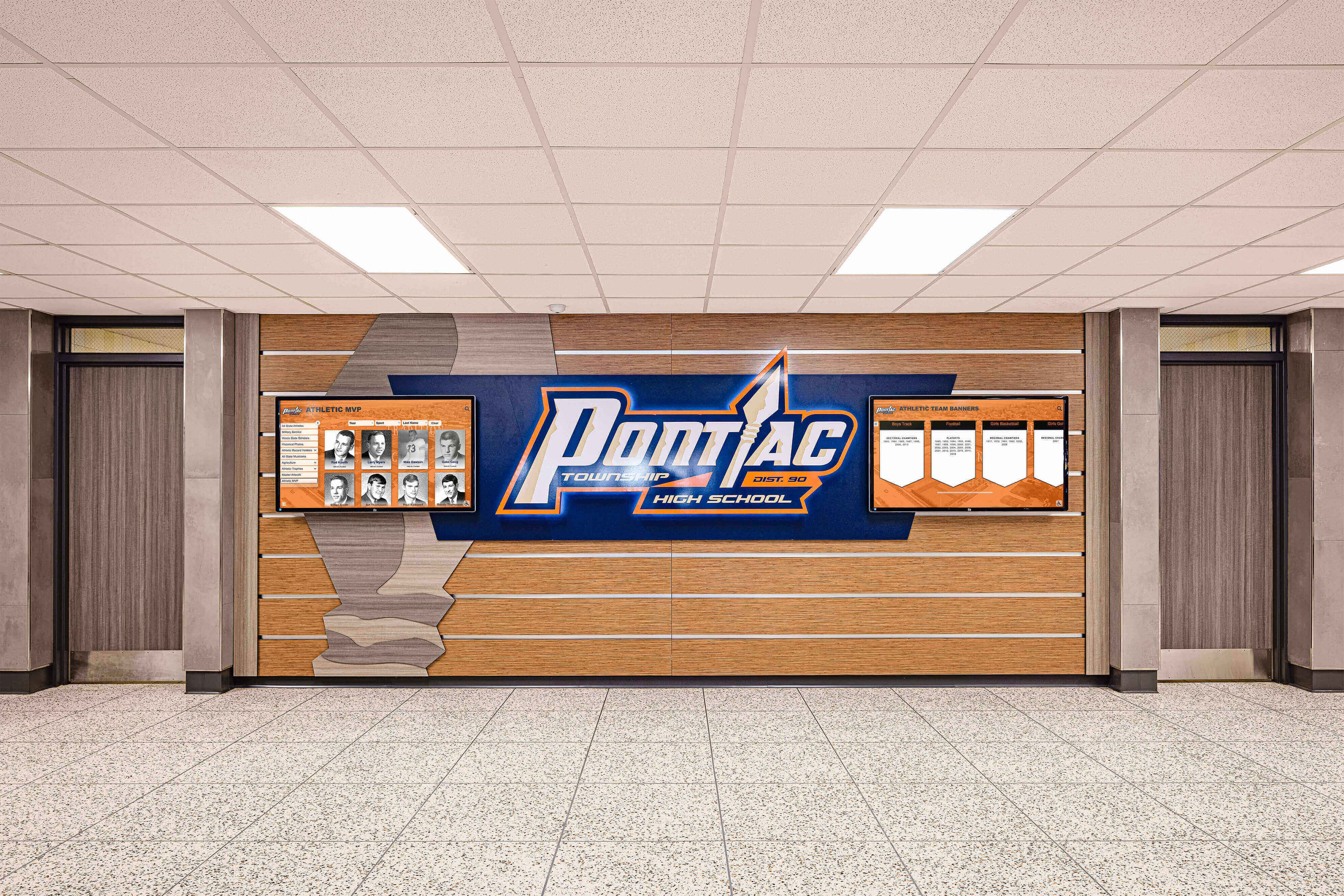
Alumni Centers and Administrative Areas: Spaces frequented by alumni during reunions, development meetings, or campus visits create opportunities for alumni engagement with personal recognition and exploration of peers’ achievements. These locations support advancement objectives by facilitating conversations about institutional excellence and ongoing support needs. Recognition becomes natural conversation starters for development staff working with donors and supporters.
Implementation Considerations and Best Practices
Successfully deploying interactive recognition displays requires systematic approaches addressing technical, content, and community dimensions.
Hardware Selection: While classroom-focused interactive panels work for recognition applications, consider whether instructional features justify additional costs versus purpose-built digital signage displays offering similar touch capabilities at lower price points. Commercial-grade displays rated for continuous operation in public spaces ensure reliability. Screen sizes should match viewing distances and audience sizes—55-inch displays suit small viewing areas while 75-86 inch screens work better for high-traffic hallways with distant viewing.
Network Connectivity: Recognition displays require reliable network connections supporting content updates, cloud platform communication, and video streaming. Hardwired Ethernet connections provide superior reliability compared to wireless networking, though quality WiFi networks may suffice in some locations. Work with IT departments early ensuring adequate connectivity exists or can be installed before hardware mounting.
Content Development Strategy: Launching recognition displays requires systematic content creation. Many schools implement phased approaches beginning with recent well-documented achievements (past 5-10 years), systematically expanding backward through decades as time permits, establishing sustainable processes for ongoing additions, and engaging alumni communities requesting historical photos and information. This phasing delivers quick wins providing immediate value while distributing extensive content development workload across manageable timeframes.
Professional photography, compelling writing, and organized presentation require dedicated effort. Schools often engage students in content development as authentic learning experiences—journalism students write profiles, photography students create portraits, history students research historical achievements, and digital media students produce video content. This approach reduces staff burden while providing valuable educational opportunities. Understanding effective content planning strategies for digital halls of fame helps schools develop systematic approaches to content creation and management.
Ongoing Management and Maintenance: Recognition displays remain valuable only when content stays current and systems operate reliably. Establish clear responsibilities for content updates, schedule regular additions maintaining freshness, monitor display functionality addressing technical issues promptly, review engagement analytics understanding what content resonates, and continuously expand historical content completing institutional documentation over time.
Most schools discover that once initial content development completes, ongoing management requires modest time investment—15-30 minutes weekly for routine updates plus periodic projects expanding historical coverage or adding new features.
Measuring Recognition Success and Impact
Well-implemented recognition systems deliver measurable benefits beyond aesthetics and sentiment. Schools should track indicators demonstrating value and informing continuous improvement.
Engagement Metrics: Touchscreen displays provide detailed analytics impossible with traditional recognition including total interactions and viewing duration, most-viewed profiles and categories, popular search terms revealing interests, peak usage times informing content scheduling, and trends over time showing sustained interest or identifying needed improvements. These metrics demonstrate recognition generates genuine engagement rather than passive viewing.
Community Feedback: Systematic feedback gathering reveals stakeholder perceptions and suggestions including student surveys assessing awareness and inspiration, alumni input during reunions or through outreach, parent feedback about recognition visibility and quality, staff observations about student engagement, and social media monitoring tracking recognition sharing and conversations. Qualitative feedback complements quantitative analytics providing complete pictures of recognition effectiveness.
Alumni Engagement Impact: Recognition systems often correlate with improved alumni engagement measurable through increased event attendance, higher giving participation rates, greater social media interaction, more volunteer involvement, and stronger survey response rates. While attribution challenges exist, many schools observe enhanced alumni connection coinciding with recognition display implementation—suggesting these systems successfully strengthen institutional relationships. Explore proven alumni engagement strategies using interactive recognition displays to strengthen connections with graduates.
Recruiting and Development Benefits: Prospective students and families frequently cite recognition displays as impressive facility features demonstrating school pride and excellence. Development staff report recognition displays facilitate donor conversations by showcasing impact and institutional values. These benefits, while difficult to quantify precisely, represent genuine value beyond pure recognition purposes.
Choosing the Right Touchscreen Strategy for Your School
Selecting optimal touchscreen technology requires understanding different applications and aligning solutions with specific needs and budgets.
Classroom Touchscreens: Instructional Focus
For classroom instruction, prioritize brands specifically designed for education with comprehensive software ecosystems, teacher-friendly interfaces requiring minimal training, robust warranties and support matching school technology lifecycles, proven reliability in educational environments, and compatibility with existing curriculum materials and technology infrastructure. Leading classroom-focused brands include SMART, Promethean, ViewSonic, and BenQ.
Budget expectations for quality classroom interactive panels typically range $4,000-$8,000 per display for 65-75 inch screens including mounting and basic training. Factor in software licensing if applicable, professional development ensuring adoption, and integration with existing technology ecosystems.
Recognition Touchscreens: Engagement Focus
For hallway recognition applications, consider purpose-built digital signage displays with commercial-grade construction for continuous operation, touch capability supporting interactive exploration, network connectivity enabling cloud-based content management, appropriate sizing for viewing distances and locations, and compatibility with specialized recognition software like Rocket Alumni Solutions.
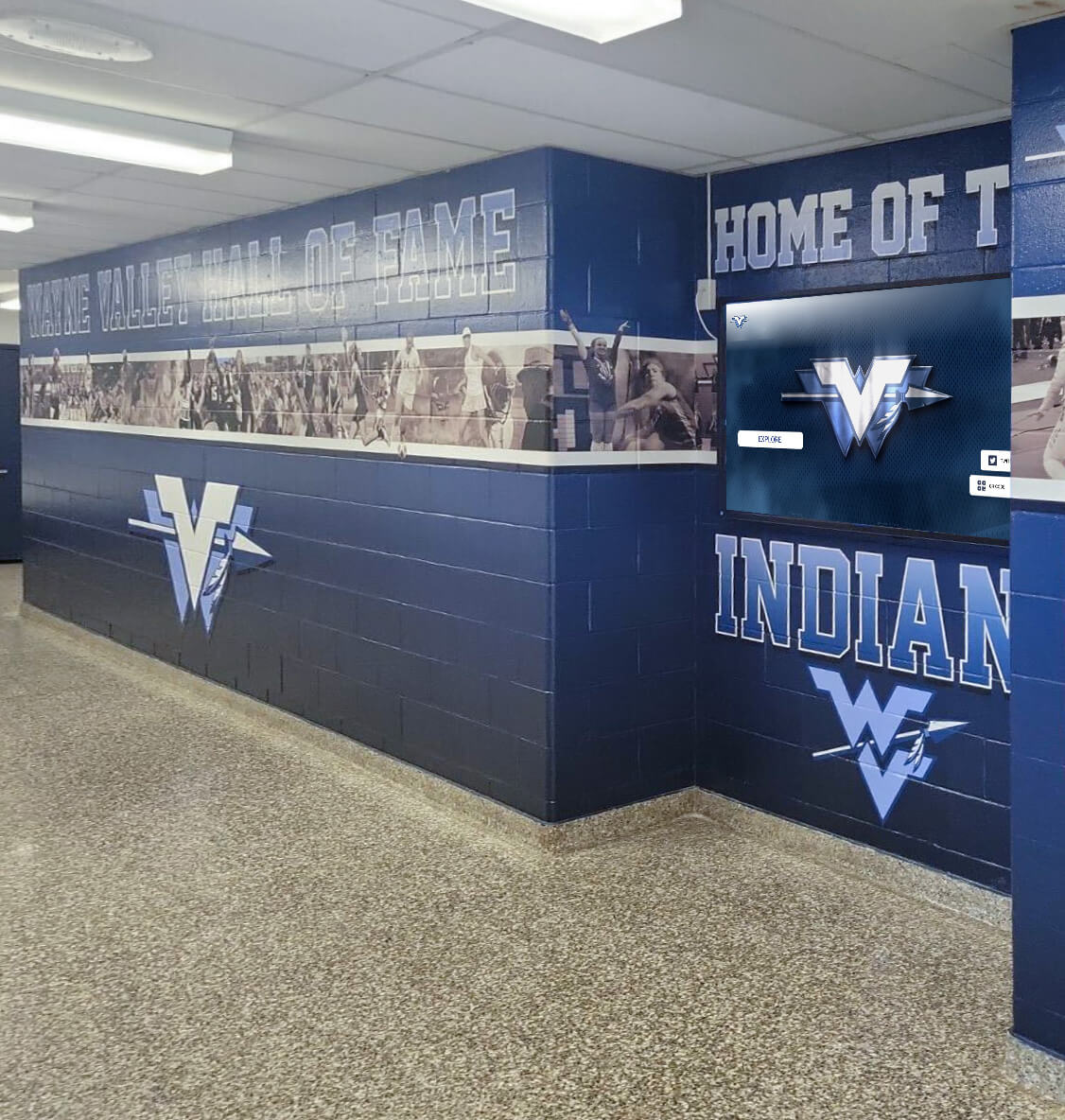
Complete recognition systems including commercial displays, recognition software licensing, professional installation, and initial content development typically cost $15,000-$35,000 for single installations, with additional displays adding $8,000-$15,000 each when connecting to the same content platform. While representing significant investments, comprehensive cost analysis reveals favorable long-term value compared to traditional recognition approaches requiring ongoing plaque production, trophy case expansion, and physical installation labor.
Hybrid Approaches: Maximizing Value
Many schools implement strategic combinations using classroom interactive panels for instruction and separate purpose-built recognition displays for hallways and common areas. This hybrid approach optimizes technology for specific use cases—leveraging educational features where they provide greatest value while employing more cost-effective recognition-focused solutions for achievement displays not requiring instructional capabilities.
Some institutions repurpose older classroom interactive panels for recognition when upgrading instructional technology, extending hardware value while solving recognition needs affordably. This approach works when older panels maintain acceptable performance and appearance standards for public display applications.
The Future of Interactive Touchscreens in Schools
Touchscreen technology continues advancing with emerging capabilities promising enhanced functionality for both instructional and recognition applications.
Artificial Intelligence Integration
AI technologies enable sophisticated features including natural language search understanding conversational queries, automated content suggestions based on viewing patterns, image recognition for photo organization and tagging, personalized recommendations adapting to individual interests, and voice interaction supporting hands-free exploration. These capabilities will make touchscreen systems more intuitive and powerful across coming years.
Enhanced Connectivity and Integration
Improved wireless technologies, seamless device integration, and expanded cloud capabilities will enable more flexible, interconnected systems. Students and teachers will move fluidly between personal devices and shared displays. Recognition systems will integrate with advancement databases, social media platforms, and mobile applications creating unified engagement ecosystems.
Improved Accessibility and Inclusion
Advancing accessibility features will ensure touchscreen technology serves all students and community members effectively including enhanced text-to-speech and speech-to-text, improved visual accommodation features, better motor accommodation alternatives, and universal design principles baked into core functionality rather than added as afterthoughts.
Sustainable and Cost-Effective Solutions
Technology maturation and increased competition drive improved price-performance ratios making quality touchscreen systems increasingly affordable for schools of all sizes. Energy-efficient displays, longer operational lifespans, and reduced maintenance requirements improve total cost of ownership. More schools will access technology previously limited to well-funded districts. Understanding future trends in digital recognition technology helps schools make forward-looking investment decisions.
Honoring Excellence Through Modern Technology
The best touchscreens for schools serve multiple critical functions—enabling engaging classroom instruction while celebrating achievement comprehensively throughout facilities. In classrooms, interactive flat panel displays from leading manufacturers transform learning by supporting collaboration, accommodating diverse learning styles, and creating immersive educational experiences aligned with how today’s students naturally interact with information.
Beyond classroom walls, these same touchscreen technologies become powerful recognition tools when paired with purpose-built software platforms specifically designed for celebrating achievement. Solutions like Rocket Alumni Solutions transform hallway displays into engaging interactive systems where students discover role models, alumni reconnect with accomplishments, and entire school communities engage with institutional heritage in ways static plaques and trophy cases never could.
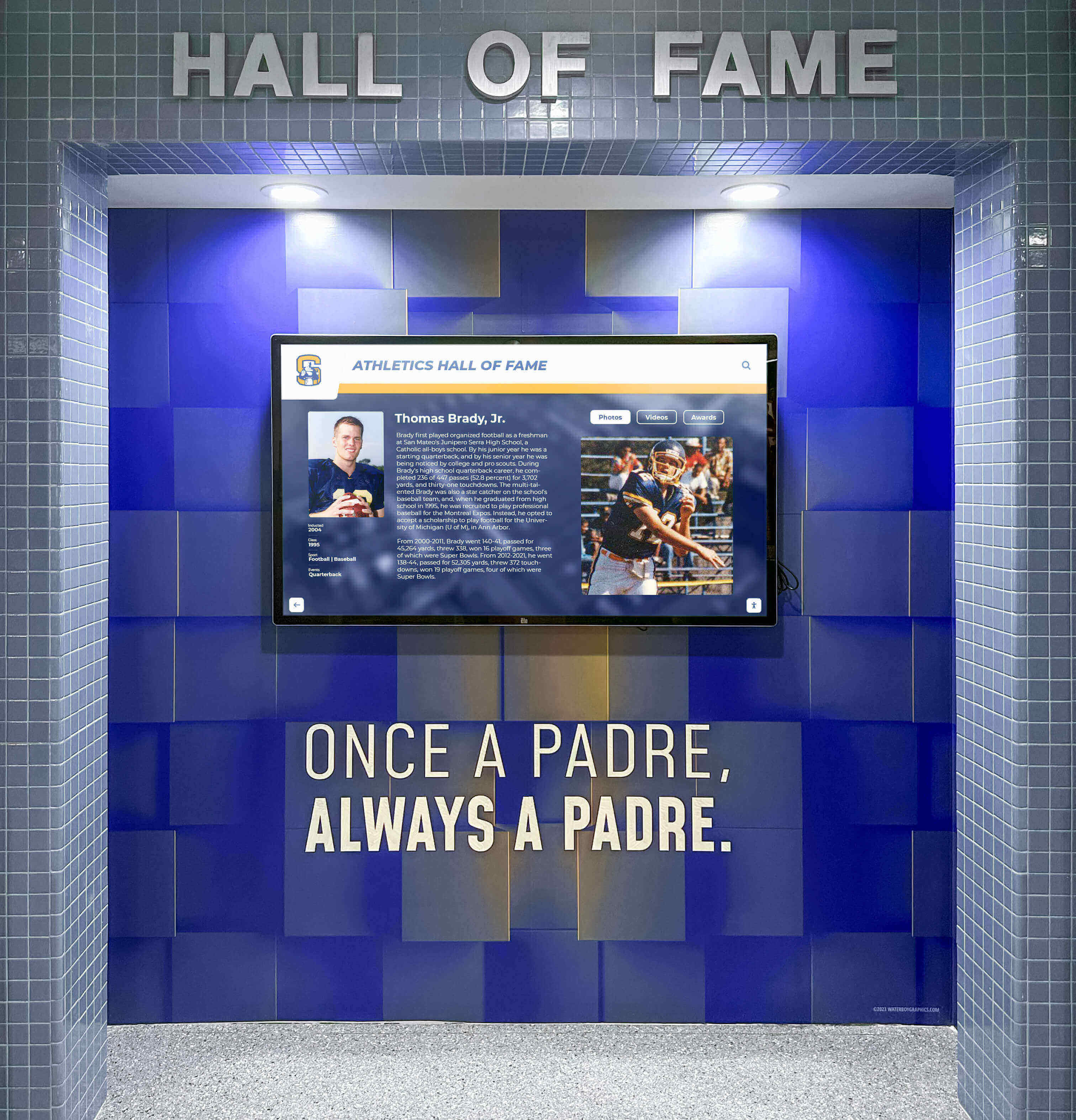
Schools implementing comprehensive touchscreen strategies address two essential needs simultaneously: providing teachers powerful instructional tools while ensuring every student achievement receives appropriate recognition without space limitations dictating whose excellence gets celebrated. Both applications represent wise investments in institutional missions—supporting learning while preserving legacy.
Whether selecting classroom interactive panels for instruction, recognition displays for hallways, or strategic combinations serving both purposes, schools should prioritize ease of use ensuring adoption, comprehensive support maintaining reliability, appropriate features matching specific applications, and long-term value protecting investments across years.
Every classroom deserves technology supporting excellent teaching. Every achievement deserves recognition honoring significance. Modern touchscreen solutions make both goals achievable without impossible choices about priorities or limitations about capacity. The question isn’t whether schools should adopt interactive touchscreen technology, but rather how quickly they can implement systems serving instruction and recognition comprehensively throughout their facilities.
Ready to transform your school’s hallways into engaging recognition displays celebrating achievement without space limitations? Explore how Rocket Alumni Solutions provides purpose-built software specifically designed for touchscreen recognition displays, enabling schools to honor excellence appropriately while inspiring current students through comprehensive achievement documentation that traditional approaches simply cannot match.
